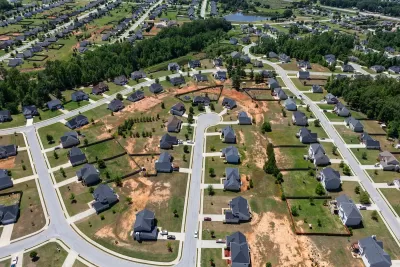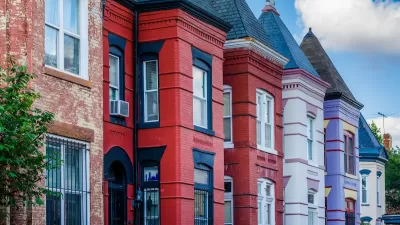How making residential building requirements more flexible can ease the housing crisis and make neighborhoods more livable for more households.

In a piece for Strong Towns, Ben Abramson explains why minimum lot size requirements often stifle new housing development and lead to higher housing costs and a dearth of affordable housing for smaller households.
Advocates for incremental development suggest that cities should adjust their zoning codes to allow for more flexible, affordable development that makes use of existing infrastructure to increase the housing supply, eliminating expensive approval processes whose costs get passed on to buyers. “Enabling a fee-simple transaction lets buyers own the dirt under their property and gives underwriters greater confidence in its viability. The more ways your community can enable builders to develop housing options with fee-simple sales, the faster they can address North America’s glaring housing shortage.”
Portland, Oregon developer Neil Heller says incremental development, such as building multiple housing units or subdivided homes on single-family zoned lots, doesn’t bring about the massive changes some people fear. “Yes, you do notice change, but it's almost imperceptible … the average person just going down the street would probably not even notice what's going on in the backyard.”
Some cities, such as Austin and Houston, have reduced minimum lot sizes as part of zoning reforms to both encourage denser, more walkable development and boost the housing supply.
FULL STORY: How Minimum Lot Size Requirements Maximize the Housing Crisis

Maui's Vacation Rental Debate Turns Ugly
Verbal attacks, misinformation campaigns and fistfights plague a high-stakes debate to convert thousands of vacation rentals into long-term housing.

Planetizen Federal Action Tracker
A weekly monitor of how Trump’s orders and actions are impacting planners and planning in America.

In Urban Planning, AI Prompting Could be the New Design Thinking
Creativity has long been key to great urban design. What if we see AI as our new creative partner?

How Trump's HUD Budget Proposal Would Harm Homelessness Response
Experts say the change to the HUD budget would make it more difficult to identify people who are homeless and connect them with services, and to prevent homelessness.

The Vast Potential of the Right-of-Way
One writer argues that the space between two building faces is the most important element of the built environment.

Florida Seniors Face Rising Homelessness Risk
High housing costs are pushing more seniors, many of them on a fixed income, into homelessness.
Urban Design for Planners 1: Software Tools
This six-course series explores essential urban design concepts using open source software and equips planners with the tools they need to participate fully in the urban design process.
Planning for Universal Design
Learn the tools for implementing Universal Design in planning regulations.
Gallatin County Department of Planning & Community Development
Heyer Gruel & Associates PA
JM Goldson LLC
City of Camden Redevelopment Agency
City of Astoria
Transportation Research & Education Center (TREC) at Portland State University
Jefferson Parish Government
Camden Redevelopment Agency
City of Claremont





























